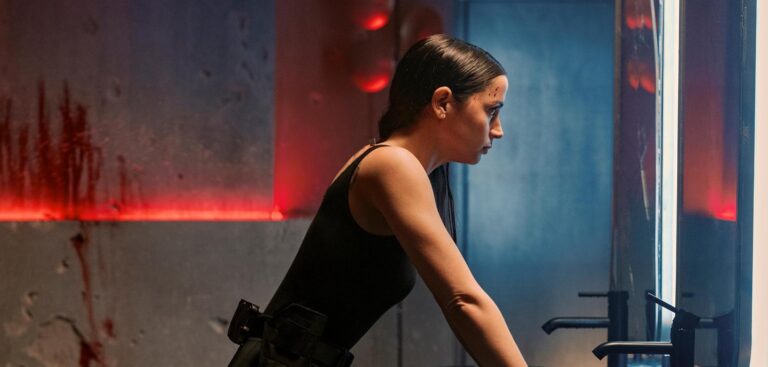Ballerina marks the latest entry in the ever-expanding John Wick universe, and the first proper spinoff to step out from behind the shadow of the Baba Yaga himself. While the previous films have continued to build upon the mythology of Continental Hotels and mysterious gold coins, hinting at a complex world of unexplored territory, there’s always a certain amount of trepidation about taking a franchise in a different direction. Despite a wobbly start, Ballerina manages to find its footing in an inventive second half, carving out its own bloody niche and delivering on the gorgeously choreographed chaos that has become a calling card of the series.
Set roughly during and after the events of John Wick: Chapter 3 – Parabellum, the film follows Eve (Ana de Armas), whose childhood tragedy propels her into the rigorous ballet-turned-assassin training regimen of the Ruska Roma. The catalyst for her journey is the murder of her father, which leads her on a quest for vengeance against a shadowy organization headed by the enigmatic Chancellor (Gabriel Byrne). Along the way, Eve crosses path with franchise veterans including Winston (Ian McShane), The Director (Anjelica Huston) and, rather briefly, John Wick himself (Keanu Reeves), establishing her place in the franchise’s labyrinthine mythology.
That mythology, unfortunately, bogs down much of the film’s first hour. While the Wick universe thrives on ornate rules and mysterious hierarchies, Ballerina leans too heavily into exposition without offering enough emotional payoff. The early scenes are heavy with lore but light on momentum, and it all feels a bit too familiar: a lone killer with a tragic past, working through grief via increasingly elaborate acts of retribution. A slower, more character-focused approach is refreshing in theory, but the film’s script doesn’t always know how to support it, and key emotional beats are crudely sketched rather than fully developed.
But Ballerina undergoes a startling transformation around the halfway mark, jolting to life seemingly out of nowhere. Action sequences begin to stretch out and breathe, showcasing the series’ hallmark choreography with surprisingly playful execution. A snowy Austrian village becomes a dazzling stage for ultraviolence, where flamethrowers meet frozen lakes and ice skates become deadly weapons. It’s a brilliant conceptual move and it pays off handsomely in some of the film’s most memorable set pieces. What’s most refreshing about this stretch is its embrace of absurdity: household objects become lethal tools and everyday citizens reveal hidden assassin identities. The violence goes from grim to gloriously over-the-top, and there’s a welcome streak of gallows humor that cuts through the solemnity, suggesting a film finally discovering its voice.
Of course, it’s not all sunshine and roses. Tonal inconsistencies occasionally mar the experience, perhaps a product of the rumored reshoots involving franchise visionary Chad Stahelski. Indeed, the stark differences between the film’s first and second hour suggest a production trying to reconcile two competing visions. But if Ballerina is uneven, it’s also undeniably ambitious, trying to reimagine what this universe can look like through a female lens. Even if it doesn’t fully succeed in articulating what that means, it still shows flashes of what the franchise might become. It’s a film that asks if the John Wick world can survive without its central star or its original director firmly at the helm, and it largely answers with an emphatic “probably!”

